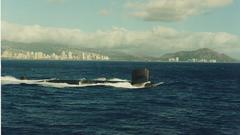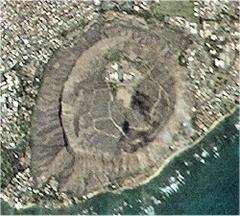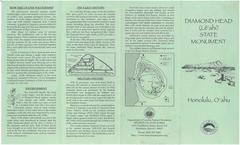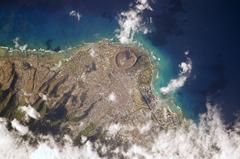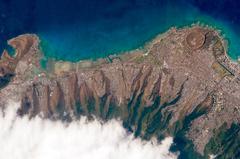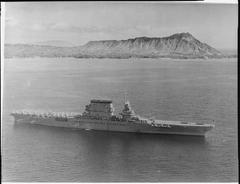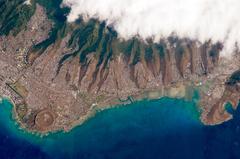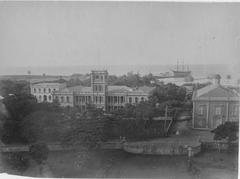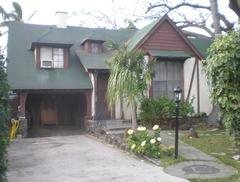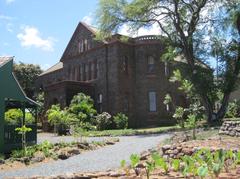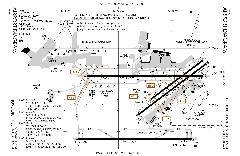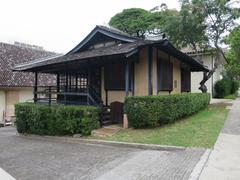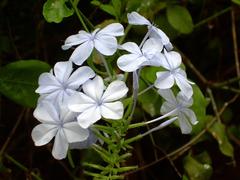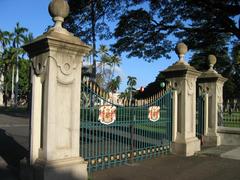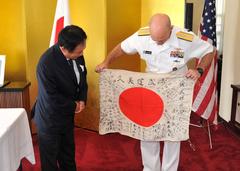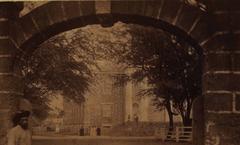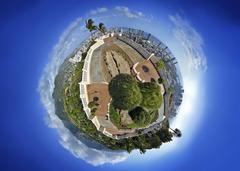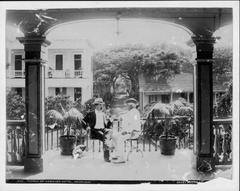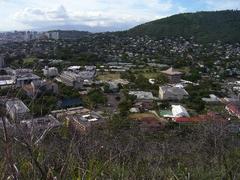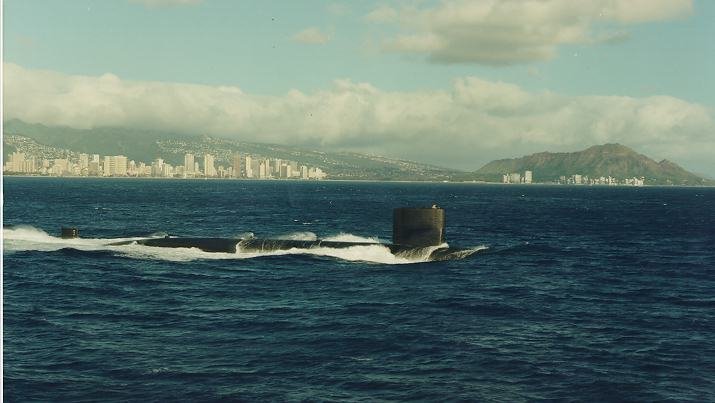
Diamond Head Visiting Hours, Tickets, and Guide to Honolulu’s Historic Landmark
Date: 14/06/2025
Introduction
Diamond Head, or Lēʻahi as known to Native Hawaiians, is one of Oahu’s most iconic natural and historical landmarks. Rising above Honolulu’s skyline, this ancient volcanic tuff cone offers visitors not only spectacular panoramic views but also a profound journey through Hawaii’s geological, cultural, and military past. Whether you are a history buff, a nature lover, or simply seeking an unforgettable adventure, Diamond Head State Monument provides a unique experience that connects you to the very heart of Hawaii.
This detailed guide covers everything you need to know about Diamond Head visiting hours, ticketing, accessibility, hiking tips, cultural significance, and nearby attractions. Plan your visit with confidence using official resources and expert travel advice, and discover why Diamond Head remains a quintessential part of any Oahu itinerary (Hawaii State Parks; Go Oahu; Wikipedia).
Table of Contents
- Geological Formation of Diamond Head
- Cultural and Spiritual Significance
- Western Discovery and Military History
- Transition to State Monument
- Visiting Diamond Head: Hours, Tickets & Accessibility
- The Diamond Head Hike: Trail Details and Experience
- Practical Tips for Visitors
- Transportation and Nearby Attractions
- Conservation and Respectful Visiting
- Frequently Asked Questions (FAQs)
- Summary Table: Key Historical Milestones
- Conclusion and Visitor Recommendations
- References
Geological Formation of Diamond Head
Diamond Head is a volcanic tuff cone formed approximately 300,000 years ago during the Honolulu Volcanic Series, long after the main Koʻolau Volcano became dormant. A single explosive phreatomagmatic eruption—when magma contacted groundwater—created the large crater, depositing distinctive layers of ash and rock that now form its iconic ridgeline. The crater rises 760 feet (232 meters) above sea level and spans about 3,500 feet (1,067 meters) in diameter, offering a visible testament to Oahu’s dynamic geological history (Hawaii State Parks; Wikipedia).
Diamond Head is part of a chain of volcanic features on Oahu, including Punchbowl Crater, Hanauma Bay, and Koko Head. The area’s topography is further defined by coral reefs and marine terraces, evidence of ancient shorelines uplifted by tectonic forces (Hawaii State Parks).
Cultural and Spiritual Significance
Long before Western contact, Diamond Head—Lēʻahi—was revered by Native Hawaiians as a sacred site. The name “Lēʻahi” translates to “brow of the tuna,” referencing the crater’s resemblance to a tuna’s dorsal fin (Wikipedia; earthlymission.com). Hawaiian legends, including those involving the goddess Pele and the demigod Maui, imbue the site with spiritual meaning. Lēʻahi was used as a navigational landmark by voyagers and a location for sacred rituals led by kahuna (priests), where offerings and ceremonies honored land and sea deities (nanihawaii.com; hawaiiansuite.com).
The summit and slopes are home to native flora such as the Hawaiian hibiscus and ilima, as well as the nēnē (Hawaiian goose), underscoring the crater’s cultural and ecological value (Hawaii State Parks).
Western Discovery and Military History
Discovery and Naming
British sailors in the late 18th and early 19th centuries mistakenly identified sparkling calcite crystals in the soil as diamonds, giving rise to the name “Diamond Hill,” later changed to “Diamond Head” (Wikipedia).
Military Fortification
In 1904, the U.S. government acquired Diamond Head and surrounding lands to establish Fort Ruger, Hawaii’s first military reservation (Diamond Head Hike). Key developments included:
- Coastal Artillery Batteries: Multiple batteries (Harlow, Dodge, Hulings, Birkhimer, and 407) were built between 1910 and 1943, with tunnels, bunkers, and the summit Fire Control Station overseeing Oahu’s southern coastline (DLNR Hawaii).
- World War II and Cold War: Radar stations, anti-aircraft batteries, and a Nike missile site operated through the mid-20th century before military use declined post-1963 (Hawaii State Parks).
Today, many tunnels and batteries remain, forming the Fort Ruger Historic District (Wikipedia).
Transition to State Monument
Transferred to the State of Hawaii in 1968, Diamond Head was designated a State Monument and recognized as a National Natural Landmark the same year. Restoration and conservation efforts focus on habitat protection and the preservation of military structures (Hawaii State Parks).
Visiting Diamond Head: Hours, Tickets & Accessibility
Reservations and Entry
Advance reservations are required for all out-of-state visitors as of May 2022 (Hawaii State Parks; TravelAwaits). Reservations can be made up to 14–30 days in advance, and visitors must arrive within 30 minutes of their time slot.
Visiting Hours
- Open daily: 6:00 a.m. – 6:00 p.m.
- Last entry for hikers: 4:00 p.m.
- All visitors must exit by 6:00 p.m.
Ticket Prices
- Entry on foot: $5 per person (children under 3 and Hawaii residents exempt)
- Parking: $10 per vehicle
Tickets should be booked online in advance, especially during peak seasons (Hawaii State Parks).
Accessibility
While the Visitor Center and crater floor facilities are accessible, the summit trail is not ADA accessible due to steep grades, uneven terrain, and stairs. Service animals are permitted, but pets are not (Hawaii State Parks).
The Diamond Head Hike: Trail Details and Experience
Trail Overview
- Trail length: 0.8 miles (1.3 km) one-way; 1.6 miles (2.6 km) round trip
- Elevation gain: 560 feet (171 meters)
- Trail surface: Starts paved, transitions to rocky and uneven sections
- Stairs: Includes several flights, notably a steep 99-step ascent followed by a spiral staircase and tunnel (Wanderlust Chloe)
Duration: Most visitors complete the round trip in 1.5 to 2 hours, including time for photos and rest at the summit.
Scenic Highlights
- Summit Views: Panoramic vistas of Waikiki, Honolulu, the Pacific Ocean, and on clear days, neighboring islands (No Bed Times No Borders)
- Historic Sites: Military bunkers and observation posts line the trail, with interpretive signage explaining their history (Go Oahu)
Trail Tips
- Arrive early morning to avoid crowds and heat
- The trail is exposed—bring sun protection and water
- Restrooms and water are only available at the entrance
Practical Tips for Visitors
What to Bring
- Sturdy, closed-toe shoes for uneven terrain (Travelling With Nikki)
- Hat, sunglasses, sunscreen
- Water (no refill stations on the trail)
- Camera/phone for photos
- Light snacks
- Flashlight or phone light for the tunnel
Trail Etiquette
- Yield to uphill hikers
- Carry out all trash
- Respect signage and stay on marked paths (The Tourist Checklist)
Transportation and Nearby Attractions
Getting There
- By Car: Parking fills quickly; arrive early
- Public Transit: TheBus (routes 23 and 2) and Waikiki Trolley Blue Line service the crater entrance (TravelAwaits)
- Walking: A scenic walk from Waikiki takes 45–60 minutes (Wanderlust Chloe)
Nearby Attractions
- Waikiki Beach: Iconic surf and relaxation
- Kapiolani Park: Lush green space for picnics and sports
- Honolulu Zoo: Family-friendly wildlife encounters
- Diamond Head Beach Park: Surfing and scenic views
- Kapahulu Avenue: Local eateries offering plate lunches and shave ice (TravelAwaits)
Conservation and Respectful Visiting
Diamond Head is a protected State Monument and sacred cultural site. Visitors are urged to:
- Stay on designated trails
- Not disturb wildlife or remove plants/rocks
- Participate in educational programs and guided tours to deepen understanding
- Show respect for the site’s spiritual significance (hawaiiansuite.com)
Frequently Asked Questions (FAQs)
Q: What are Diamond Head’s visiting hours?
A: Open daily from 6:00 a.m. to 6:00 p.m.; last entry at 4:00 p.m.
Q: How much are tickets and is a reservation required?
A: $5 per person (on foot), $10 per vehicle for parking. Advance reservations are required for out-of-state visitors.
Q: Is the hike suitable for children and people with disabilities?
A: The hike is moderately challenging—children comfortable with stairs can usually complete it. The trail is not wheelchair-accessible.
Q: Are guided tours available?
A: Yes, guided and audio tours provide historical and cultural context.
Q: Are there restrooms along the trail?
A: Restrooms are near the park entrance only.
Summary Table: Key Historical Milestones
| Year | Event |
|---|---|
| ~300,000 | Formation of Diamond Head during the Honolulu Volcanic Series |
| Pre-1800s | Lēʻahi revered as a sacred site by Native Hawaiians |
| 1825 | Named “Diamond Hill” by British sailors |
| 1904 | Purchased by U.S. government for military use |
| 1908–1916 | Construction of Fort Ruger and artillery batteries |
| 1941 | Radar station added for WWII defense |
| 1950s | Nike missile site established |
| 1968 | Designated State Monument and National Natural Landmark |
| 1976 | Officially named Diamond Head State Monument |
Conclusion and Visitor Recommendations
Diamond Head State Monument is an essential stop in Honolulu, blending natural beauty, spiritual depth, and a storied military past. To get the most out of your visit:
- Book tickets and parking in advance to guarantee entry
- Start your hike early for cooler temperatures and fewer visitors
- Prepare properly with sturdy shoes, water, and sun protection
- Respect the site’s cultural and ecological significance
- Explore nearby attractions to complete your Oahu adventure
For the latest information, visit the official Diamond Head State Monument website. Enhance your experience with the Audiala app, which offers interactive maps and guided audio tours tailored to Diamond Head and other Hawaiian sites.
References
- Diamond Head’s Geology and Formation, Hawaii State Parks
- Diamond Head, Hawaii, Wikipedia
- The History of Diamond Head State Park, Hawaii State Parks
- Diamond Head Hike Military History
- Diamond Head State Park Brochure, DLNR Hawaii
- Diamond Head State Monument, Go Oahu
- How to Visit Diamond Head Oahu, TravelAwaits
- Diamond Head History and Culture, Hawaiian Suite
- What is Diamond Head in Hawaii?, Nani Hawaii
- Diamond Head Honolulu Hawaii Hike, Wanderlust Chloe
- Collections of Waikiki: Diamond Head
